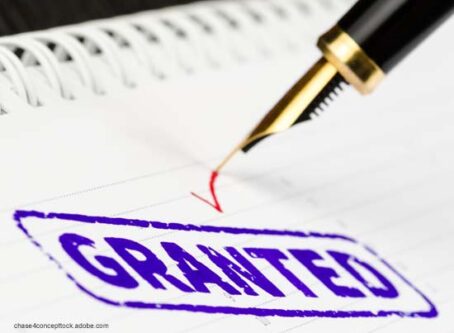Senate bill will reauthorize Diesel Emissions Reduction Act
Congress is poised to renew the Diesel Emissions Reduction Act, which provides incentive to rebuild diesel engines to meet strict emission standards via loan programs. On Wednesday, stakeholders gave the Senate Committee on Environment and Public Works input on the program, including positions on glider kits.
On Wednesday, March 13, the Senate EPW committee held a hearing titled “Hearing to Examine S747, Diesel Emissions Reduction Act of 2019.” The committee heard testimony from a panel of three stakeholders:
- Kurt Nagle, president of the American Association of Port Authorities.
- Dale Krapf, chairman of Krapf Group Inc.
- Timothy Johnson, consultant for Corning Inc.
For the most part, testimony provided by the panel confirmed what the committee members already knew and believed. All three witnesses support the extension of DERA, with no voice of opposition present.
The official bill was introduced Tuesday, March 12.
What is DERA?
The Diesel Emission Reduction Act is a provision within the Energy Policy Act of 2005 signed by President George W. Bush. Low-cost revolving loans are granted to eligible applicants to achieve significant reductions in diesel emissions in terms of pollution produced and diesel emission exposure. Concerning the latter, loans are prioritized for fleets operating in areas designated as poor air quality areas.
At least 50 percent of the funds allocated to the DERA program each year is set aside for public fleets such as school buses. At least 90 percent of all DERA funds must be used for projects using a certified engine configuration or a verified technology. According to the bill, an engine is considered certified when:
- Verified by the California Air Resources Board.
- Meets or is rebuilt to a more stringent set of emission standards.
- For configurations that replace an existing engine or vehicle, the replaced engine must have been removed from the vehicle and returned to the supplier for remanufacturing to more stringent standards or for scrap.
“Verified technology” means a pollution control technology, including a retrofit technology or auxiliary power unit, which has been verified by CARB.
No more than 10 percent of DERA funds are to be used for the development and commercialization of emerging technologies. Furthermore, 30 percent of the DERA appropriation is allocated to the states and territories to fund programs for clean diesel projects.
Essentially, nearly all the loans are to be used for existing, cleaner engine technology, half of which is allocated to public fleets.
The 2005 bill suggested $200 million for of each fiscal years 2007 through 2011. However, actual funding fell way short. In 2007, only $50 million was allocated to DERA. From 2008 to 2011, the program received $60 million each year.
DERA reauthorization
In 2010, DERA was reauthorized with modifications to the original act. DERA 2010 got rid of the requirement that 50 percent of funding go to public fleets. At least 95 percent of funding goes toward existing technologies, rather than 90 percent, reducing the amount for emerging technologies to 5 percent. The new version also threw grants and rebates into the mix.
Realizing that DERA would not receive $200 million each year, the reauthorized version requested $100 million each year from fiscal years 2012 through 2016. This time around, the program took an even bigger hit. From FY2012 to FY2015, enacted budgets ranged only from $20 million to $30 million, despite President Obama requesting no funding at all in 2015. Obama also requested only $10 million for FY2016, but DERA ended up receiving $50 million.
Under President Trump, DERA received about $60 million in enacted funds in 2018. EPW ranking member Thomas Carper, D-Del., said during the hearing that DERA is receiving $87 million. Although funding has been higher, this is despite Trump requesting only $10 million each year, including his FY2020 budget request released on Monday.
The latest round of reauthorizing DERA is more of the same.
“In all my years of public service, it’s not every day that I’ve seen programs that generate this much bipartisan support but, then again, not many programs are as effective and reflect as much commonsense as does DERA,” Carper said.
During his testimony, Kurt Nagle pointed out how the program has helped with clean truck programs throughout the nation’s ports.
“DERA has been especially helpful in supporting larger ports’ clean truck programs,” Nagle said. “This includes clean truck programs at the Port of Baltimore, Massport, New York and New Jersey, Houston, Seattle, and Georgia. These programs help truckers who service the ports buy new cleaner drayage trucks that not only reduce emissions but are more fuel efficient. These trucks do not have the resources to replace their trucks as many are independent operators and these trucks are very long lasting.”
Johnson of Corning Inc. made several claims regarding older engines.
“One pre-2007 engine emits the same particulate pollution as about 20 of today’s clean engines,” Johnson said. “Engine owners are being motivated to clean up their engines, but the cost is maybe $9,000 each, and this added cost wasn’t contemplated when the engine was purchased … By providing funding, motivated owners can clean up these dirty engines without damaging their business plans.”
Glider kits
The very last question of the hearing came from Carper. Addressing exemptions from the Clean Air Act given to glider trucks, Carper asked the panel whether or not the exemption undermines the progress made under DERA.
“The exclusion of glider trucks from regulation is essentially taking advantage of an unintended loophole in the regulation,” Johnson said.
Johnson went on to claim that pollution from one glider truck is equal to the pollution of 40 newer trucks. After an EPA and California low-NOx initiative kicks in, Johnson claimed that pollution from one glider truck will be the same as hundreds of newer trucks, not just 40.
“It’s entirely inappropriate and not fair to not close that loophole and prohibit the use of glider trucks,” Johnson said.
During a House Environment and Oversight subcommittee hearing held last September, Collin Long, director of government affairs for the Owner-Operator Independent Drivers Association, testified in support of the EPA exemption.
“A glider kit’s reliability extends beyond routine maintenance, as fuel efficiency is either closely matches, or in some cases, exceeds a new truck’s,” Long said. “On average, each of our members purchase over 19,000 gallons of fuel per year. An increase in fuel efficiency by just 1 mile per gallon would save almost 3,000 gallons of diesel per truck.”
OOIDA also states that glider kits offer small-business truck drivers a more affordable and reliable alternative to increasingly expensive new vehicles.









